Beer guide to Vietnam
and neighbouring countries
Jonathan Gharbi
Beer guide to Vietnam and neighbouring countries Copyright 2014, Jonathan Gharbi Ansvarig utgivare: Jonathan Gharbi
Framstllt p Vulkan.se
ISBN: 978-91-637-7857-5
PrefaceI didn't know what a great beer culture Vietnam had when I came herein 2012. Now two years later I am overwhelmed by all the wonderfulbreweries in this country. This guide could only be made thanks to all support and help from my friends and all beer interested people that Imet along the way. I am also very grateful for all support and encouragement from the Swedish Embassy in Hanoi. Thanks to all helpful brewers and staff at all breweries that made this book possible.
Jonathan Gharbi
IntroductionVietnam is a popular destination for many adventurous tourists to enjoy street food and beautiful landscapes. One other distinct experienceis the Bia Hoi beer which can predominantly be found along the narrowstreets of Hanoi. Bia Hoi is a fast produced light beer made of rice, maltand sugar, often served more or less directly on the street. This book ismainly a guide to the almost unknown microbrewery scene but you cant write a book about Vietnam without mentioning bia hoi.
Booming Microbrewery CultureBeer is not only a symbol of the new Vietnam, it is also a bearer ofculture and a country that takes in new influences but values local culture. There are about 45 microbreweries in Vietnam, whereof 35 are makingCzech inspired beer and the other 10 are influenced by German beerculture. Compared with Bia Hoi and international bottled beers, thesebeers contain more malt and hops and are therefore more full bodiedwith a stronger taste. Vietnam has a long history with the former Soviet countries Czechoslovakia and East Germany. Most of todays brewershavelivedin Czech Republicand havebrought beertraditions,knowledge and ingredients with them back to Vietnam.
Even though recipes and ingredients are the same, local water and weather are important for the taste. Some changes have also been madeto adopt the beer after local culture and demand. The result? Amazing beer, well balanced and full of taste. Every brewery is making their ownbeer. Variations exist not only because of different recipes but alsodepending on time of the year and its impact on fermentation andstorage temperatures. The beers are unique and alive, a result ofexperience and local conditions.
Following the beer trail in VietnamWorldwide Vietnam is known, or should be known, for its beerconsumption which is estimated at about 42 litres of beer a year perperson. As known today, there are 26 microbreweries in Hanoi, 12 in HoChi Minh City and then 9 more throughout Vietnam. You can find amicrobrewery in almost every popular travel destination, like Phu Quoc,Mui Ne, Nha Trang, Da Nang, Da Lat, Ninh Binh, but also in the coastalcity of Hai Phong and neighbouring Hai Duong. They are easy to missbecause of all the other beer establishments in the country and lack ofpromoting.
Focus on good beer before moneyImporting both hops and malt from Czech Republic and Germanyrequires planning but most importantly; a strong dedication to beer. Asthe microbreweries are there, but not easy to find, its up to the customersto find their way to them. The price of a glass of beer at the breweries isabout 35,000 VND, less than 2 USD, despite all the hours creating it.
The future is not so bright, its rather yellow, semi-bright and with athick foam on it, full offlavours from hops and malt and locallyproduced. Keep an eye on this trend and put some effort into findingthese dedicated brewers. Dont miss the culinary experience!
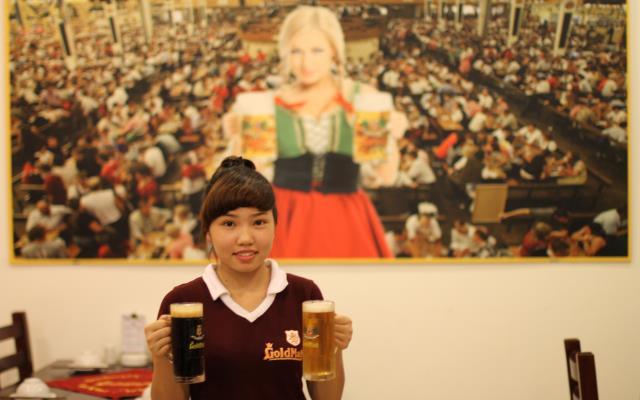 Vietnamsbeer history
Vietnamsbeer historyBeer drinking in Vietnam is quite a new phenomenon. Vietnamesepeople traditionally drink rice wine. However, the French colonistspreferred to consume beer rather than the very strong local brew, and bythe middle of the 20th century Vietnamese had adopted the habit.
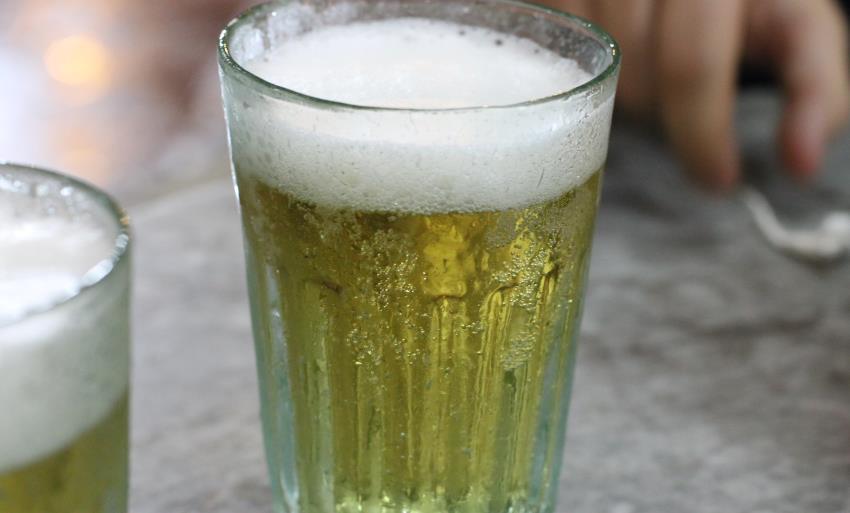 Traditional glass of beer at a bia hoi
Traditional glass of beer at a bia hoiBrewing was introduced by the French during the 1890s in Northern Vietnam. At that time, there was just one brewery, the Hommel brewerywhich was a small operation only able to produce about 150 litres a day.The beer was sold bottled, but it was so expensive that it was only for thewealthy people. When the French left Vietnam in 1954 the brewery wasrenamed to Hanoi Brewery. There was also a small brewery in SouthernVietnam that started in 1875 but kept on making lager beer and later onthe company became todays SABECO. Rice wine has always been aneasy, accessible and cheap option but after a ban on home distilling, theinvention of bia hoi became a popular option. After 1950, early formsof bia hoi began to appear. Bia hoi, which means fresh beer or gas beer, is alight beer made from rice, malt, sugar and some hop extract. The beer isvery light in both taste and structure. You get some notes from the rice, which makes it different from wheat-based beers. Because ofitsingredients, it has quite a short shelf life, in addition to the low alcoholcontent (about 3% ABV). Like any beer, bia hoi is not made in one day;the production process lasts a few weeks. Bia hoi became very popularand soon other beers followed.
Bia hoi The cheapest beer in the world
The bia hoi beer is delivered to thousands of places each day in 50-litrekegs. Normally the restaurant puts the beer in a cooling box orrefrigerator. No CO2 is added, so each keg should be consumed soonafter opening. Kegs can last four to seven days after opening inrestaurants with cooling systems. If kept cool and unopened, the beercan be stored for up to two months. Bia hoi ranks among the cheapestbeers in the world. It costs about 8,000 VND, which means you get threeglasses for about 1 USD. The drinking glasses themselves are cheap you can buy them for around 10,000 VND at the local market. The beerglasses at microbreweries cost about ten times as much because they aremade of pure glass rather than the cheaper glass that is used for bia hoiglasses. However, while the cheap light blue glasses used for bia hoi break all the time due to impurities, they are an essential part of the bia hoiexperience. It wouldnt be the same if you sat there with your beer in acognac glass!
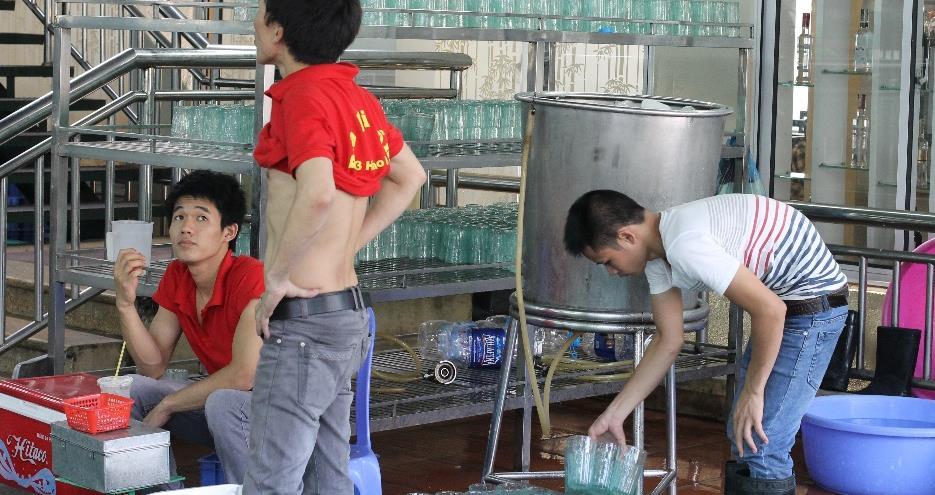 The equipment is very basic and the beer keg is often cooled withice
The equipment is very basic and the beer keg is often cooled withice This is a regular bia hoi in Hanoi, the corner of Linh Lang and Dao Tan
This is a regular bia hoi in Hanoi, the corner of Linh Lang and Dao Tan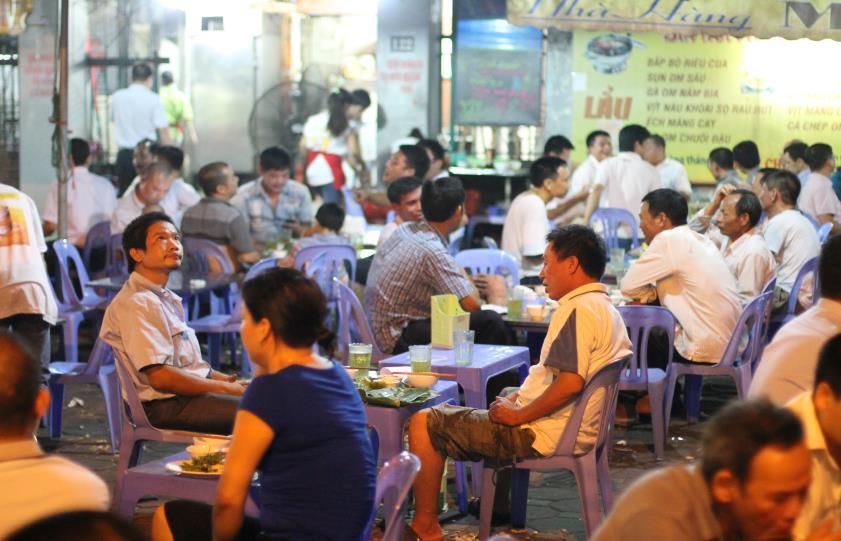 People eat and drink at the bia hoi from early day to late evening
People eat and drink at the bia hoi from early day to late eveningBia hoi refers not only to the beer itself, but to the places where oneconsumes it. If someone says, Lets meet at my bia hoi, this refers to asmall establishment that normally includes some plastic chairs and tablesand a kitchen nearby that serves food. Many deals and contracts aresealed during long dinners with food and plenty of beer. Thanks to thelow alcohol content, however, you will quickly sober up after a short walk
even after 10 glasses.
There is no such thing as a fancy bia hoi. These restaurants are alwayssimple, with only basic services available. The crowd is typically older, while the younger generation prefer more trendy and modern optionswhere they can check in on Facebook. If you go to a bia hoi, saveyourselfthe embarrassment and avoid asking for their account onFacebook.




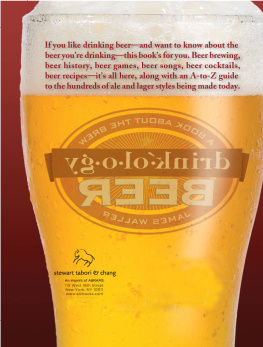



 Vietnamsbeer history
Vietnamsbeer history Traditional glass of beer at a bia hoi
Traditional glass of beer at a bia hoi The equipment is very basic and the beer keg is often cooled withice
The equipment is very basic and the beer keg is often cooled withice This is a regular bia hoi in Hanoi, the corner of Linh Lang and Dao Tan
This is a regular bia hoi in Hanoi, the corner of Linh Lang and Dao Tan People eat and drink at the bia hoi from early day to late evening
People eat and drink at the bia hoi from early day to late evening